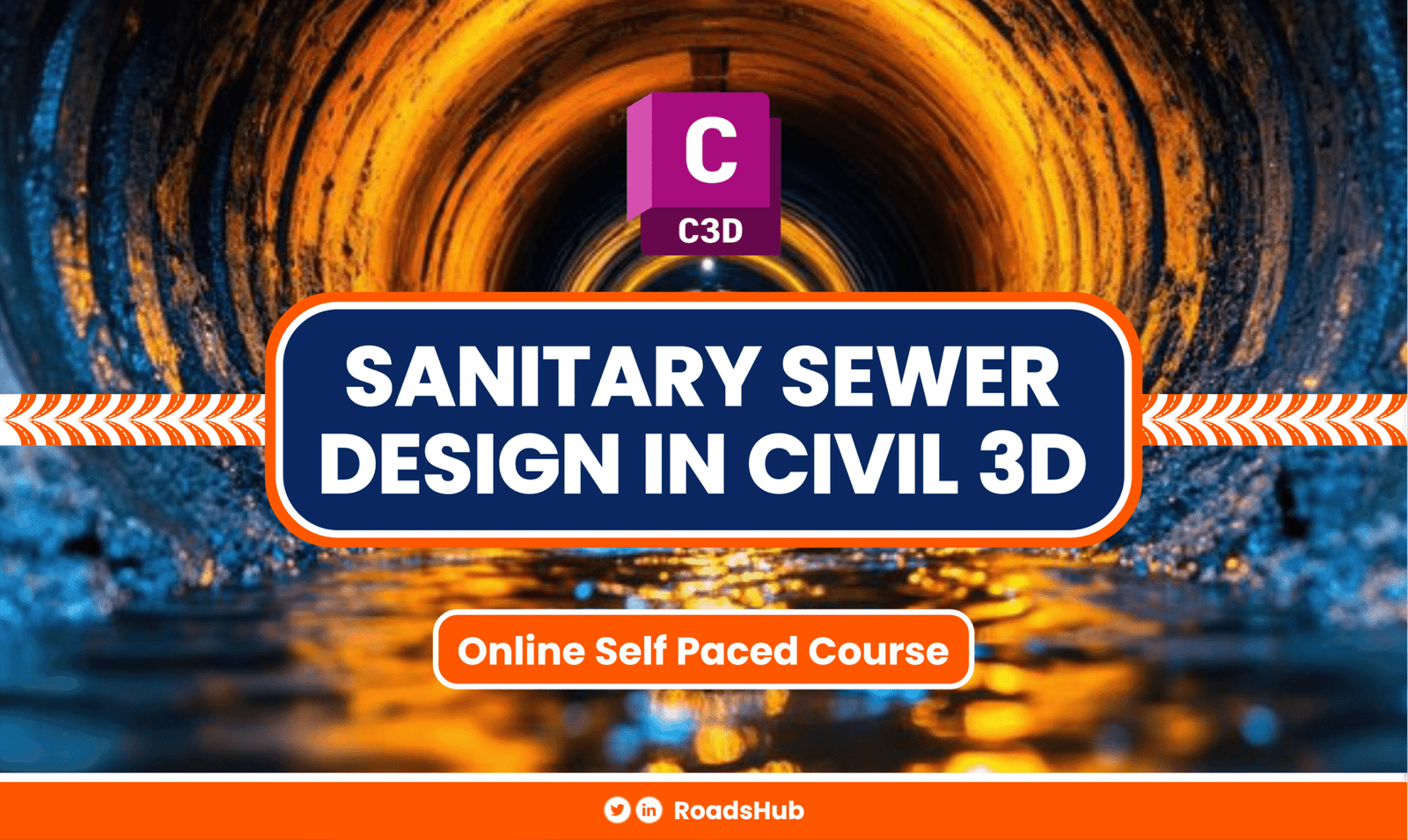About Course
About the course
This is a 2-week self-paced course on sanitary sewer Design Using Civil 3D as per sewer design standard specifications.
It is designed to equip engineers with practical skills to apply engineering principles in the Design of wastewater infrastructure, sewer systems.
Experience hands-on learning with a design to serve 500 middle-income housing stands.
This course will help civil engineers bridge the gap between theoretical knowledge and practical skills. Under the guidance of a waste management expert, Baron Sairent, engineers can seamlessly transition from beginners to professionals.
On Completion, you will earn a globally recognized certificate of completion.
Course Objectives
- Bridge theory and real-world application with real-world servicing of 243 middle-income residential stands.
- Learn about the most efficient wastewater infrastructure design
- Master different types of sanitation systems
- Master the art of pipe modeling in Civil 3D
- Master industry standards for Plan Production, Presentation, and interpretation of engineering drawings.
- Generate Comprehensive Design Reports for project implementation.
What You Will Learn
- Existing ground modeling and surface analysis
- Introduction of sewerage
- Types of sanitation
- Hydraulic Design
- Physical Layout of Sanitary Sewer
- Design of Sewer Structures, such as manholes
- Plan Production
Course Outline Overview
- Introduction to Sewer Infrastructure Design
• Definition of terms
• What is sanitation
• Public health engineering
• History of sanitation & sanitation and health
• Common sanitation technologies - Existing ground modeling
• Surface definition
• Surface analysis
• Catchment analysis - Types of sanitation
• Non-sewered sanitation
• On-site sewer sanitation
• Cost -analysis in sanitary sewer selection
• Appropriate sanitation technologies - Hydraulic Design
• Design flow and population projection
• Applicable formulae
• Colebrook vs Manning’s formula
• Table and charts, Excel spreadsheet
• Cleansing velocities
• Limiting gradients - Sewer Infrastructure Sizing and Layout
• Sewer layout
• Location of sewer
• Sewer depths
• Minimum sizes of sewer and sequences of sizes
• Determination of depths
• Manholes and pipe materials
6. Pipe and Pressure Networks Modelling in Civil 3D
• Understanding part lists
• Creating pipe networks
• Editing a pipe network
• Adding pipe networks to the profile
• Labelling and editing styles
• Showing crossing pipes and interface checking
7. Drawings Plan Production and Data Management
• Reports
• Checklist of a good sewer design
• View frames groups
• Viewports Configuration
• Creating sheets from view frames groups
Bonus
•Design Project -Complete a 324-stand servicing unit
• Design Challenge
• Professional feedback
•Lifetime access to class recordings
• Short refresher videos
• Sewer Sanitary design Manuals
• Design notes
• Sewer Design Excel spreadsheets
Who can enrol
- Civil Engineering Students
- Graduate Civil Engineers
- Civil Engineering Students
- CAD Technicians and Draughtsman
- Technologists
Requirements
- No previous design Experience is required.
- Autodesk Civil 3D (2018-2025)
- Basic Engineering knowledge
- No construction experience is required
- Basic AutoCAD knowledge is an added advantage
Materials Include
- Sanitation Design Manuals.
- Case studies.
- Weekly Q&A (Chat).
- Spreadsheets for hydraulic design.
- Free LinkedIn Profile Optimization checklists for engineers.
Course Content
Course overview
-
Technical Information Session
02:07:51
LECTURE I: Introduction to Sewer Design
LECTURE II: Project Preparation and Set Up
LECTURE III: Design in Civil 3D
LECTURE IV: Hydraulic Design
LECTURE V: Practical Design Workshop
LECTURE VI: Feedback Session and Course Recap
BONUS: Storm and Sanitary Sewer Design Webinars
Earn a certificate
Add this certificate to your resume to demonstrate your skills & increase your chances of getting noticed.

Student Ratings & Reviews

